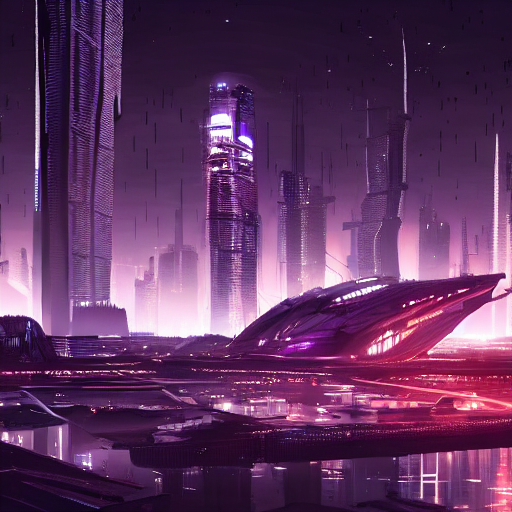from diffusers import StableDiffusionPipeline
pipe = StableDiffusionPipeline.from_pretrained("runwayml/stable-diffusion-v1-5")
ipe = pipe.to("mps")
image = pipe("a futuristic city at night, cyberpunk style").images[0]
image.save("cyberpunk_city.png")
display(image)